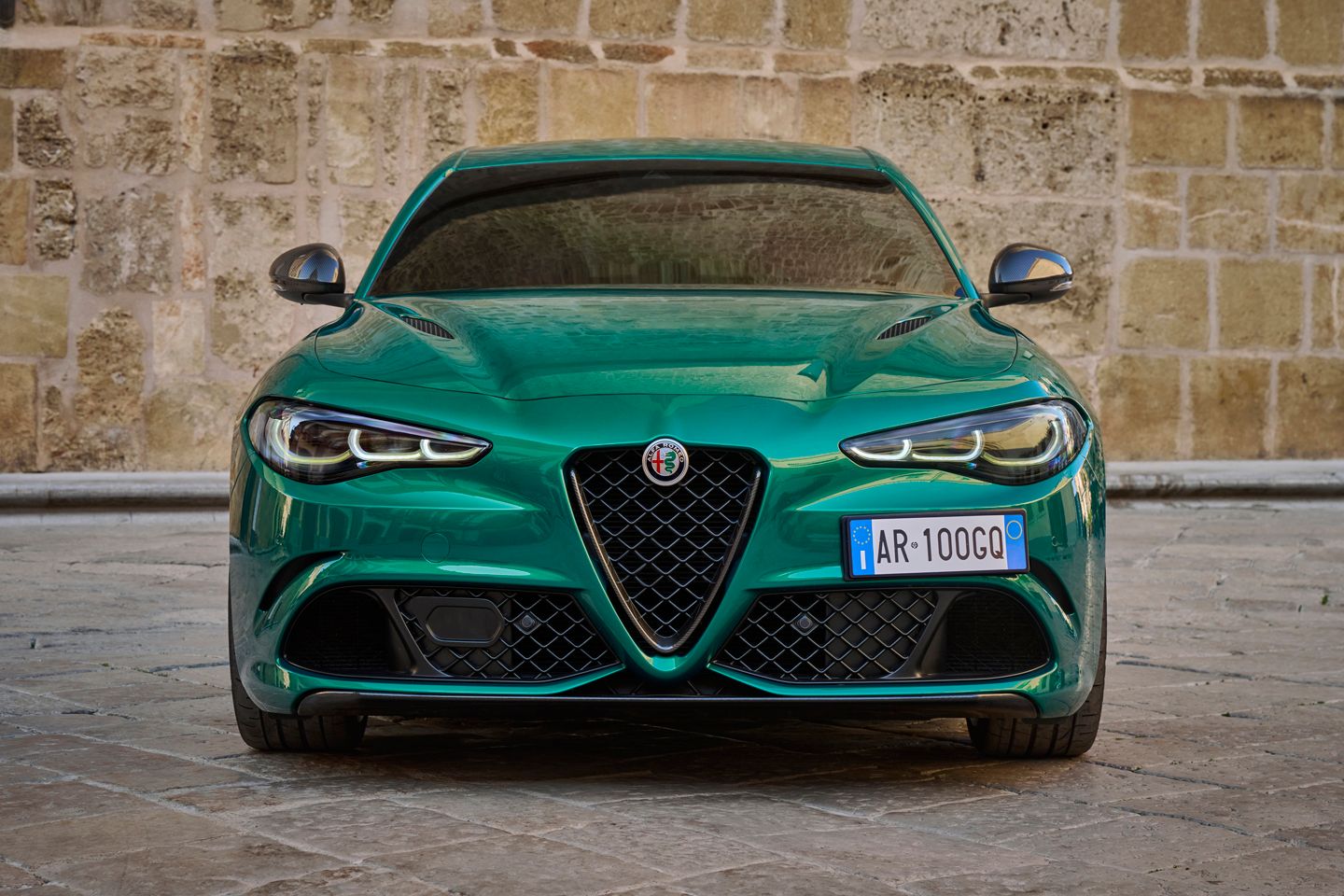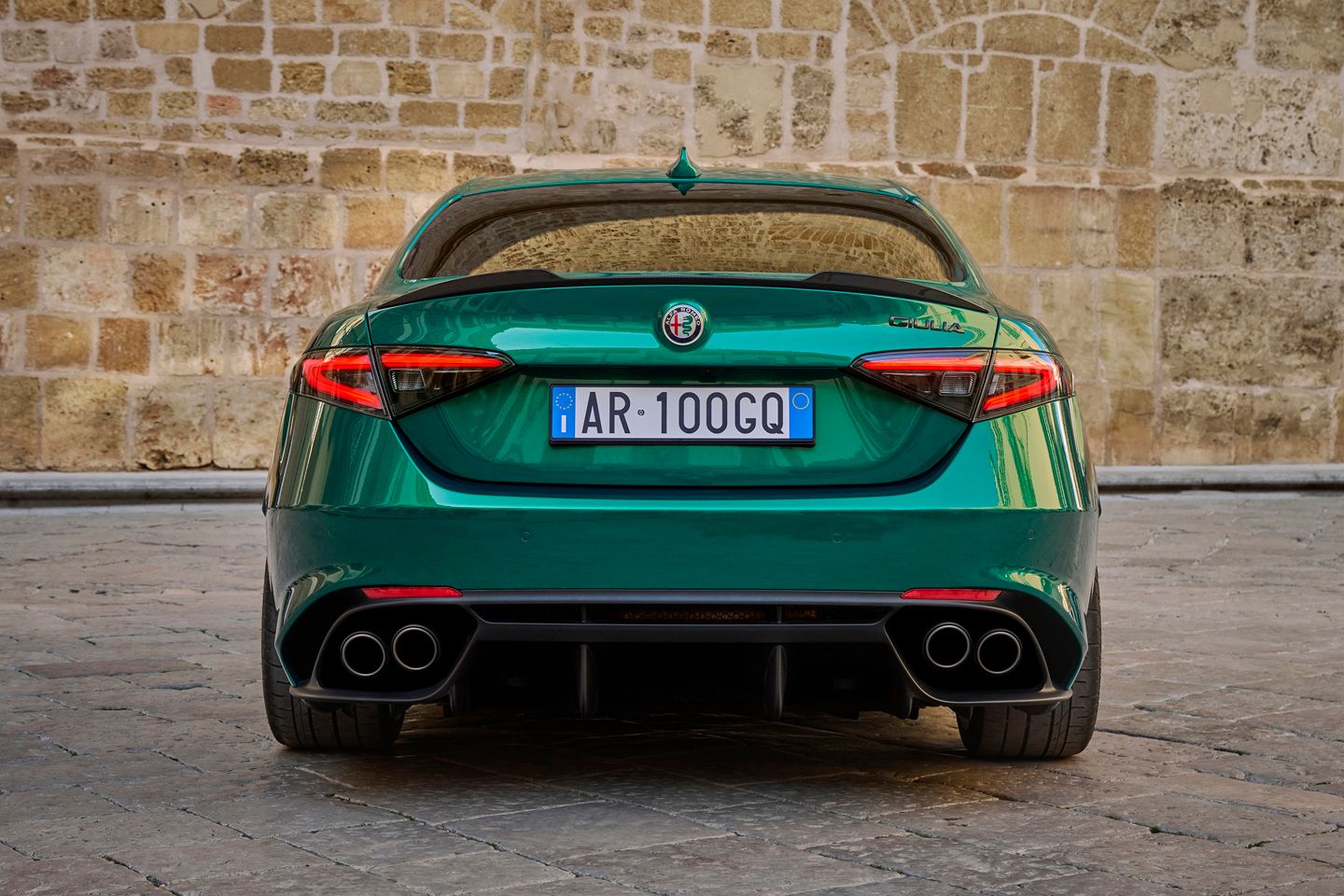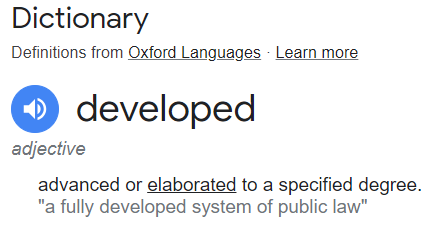2023 Alfa Romeo Giulia Quadrifoglio | PH Review
Alfa seems all too aware of the Quadrifoglio's flaws. Does its last facelift finally sort them out?

The Alfa Romeo Giulia Quadrifoglio was always going to be hero-worshipped. It had all the hallmarks of that before the off – prior to a single journalist or punter nestling in behind the wheel, the buzz around it had begun. Why? Well, it was an Alfa of course. History says that the company Nicola Romeo developed over a century ago could, pretty much, launch a cold ham and, if it wore the Alfa roundel front and back, there would be a collective chorus of “fantastico”.
It also brought back a model name that's loved as much as spaghetti bolognese, and, in Cloverleaf form, it was the Italian stallion rival to the BMW M3 and Mercedes-AMG C63 – and we needed a rival to those two titans. And while those Germans, whose designs had become angrier with each iteration, sat looking like a pair of puffed-up toads, the Giulia had enough voluptuousness about its curves to look quite dishy. Oh yes, and it was also rear-wheel drive. That was arguably the headline grabber, trumping the looks and even its headline-grabbing, Ferrari-derived, 510hp, twin-turbo, 2.9-litre V6. We'd had lower-volume models like the 4C and 8C, but there hadn’t been a mainstream, rear-driven Alfa in around 25 years.
Then it was launched and lauded in 2016. The accolades came thick and fast. 'Game changer' and, on more than one occasion, 'car of the year', were among the titles bestowed upon the Quadrifoglio. Indeed, recently it very nearly won the PH25 Best Saloon Car of the last 25 years, finishing a very close second behind the E39 BMW M5 in the voting. The problem I had, mind you, is that I didn’t love it. I know: sacre bleu. This attitude made me stick out like a sore thumb, dressed in a fisherman’s mac at a funeral. But let me clarify two things. I didn’t love the Quadrifoglio, but I understood why people did. People wanted to love it. And I liked aspects of it: its sense of lightness and compactness on the road; its performance; and I liked the playfulness of its rear end as well. Despite the enormity of its turbocharged power and torque, it was a little like the E39 M5: you could poke the bear and it wouldn’t cuff you with a sharply clawed paw.


The problems with it were obvious, though. The variable damping settings were all over the shop – especially in the softest mode – and the electronically controlled rear differential could be sublime, but also inconsistent. Then there's the drive-by-wire brakes. The pedal action was reminiscent of the brake button fitted to a Citroen DS, and all these issues were not insignificant on an expensive performance saloon – one designed to take on models that had been honed over many years. And I haven’t mentioned yet the interior quality of the earlier cars, or their woeful infotainment system. If I did, it'd feel like kicking a man when he’s down, so I won't.
But honing isn’t the preserve of BMW and Mercedes. Alfa’s been honing away, too. It revised the interior and the infotainment system in 2020, but it’s taken until now for it to produce a proper facelift – one timed perfectly to coincide with the centenary of the four-leaf clover symbol, as it happens. The Cloverleaf story began with Alfa’s pre-war driver, Ugo Sivocci, who'd become known as ‘the Eternal Second’ due to never winning a race. That was until someone drew a cloverleaf on his car before the 1923 Targa Florio, just for luck, and he went on to win the race. It was a fixture after that – apart from on one occasion, when it was left off before a race and Sivocci was killed. If you're interested, that's why the cloverleaf is surrounded by a triangle. Originally, it sat within a square, but team Alfa removed a side to represent Sivocci's loss. So Alfa has produced 100 Giulia Quadrifoglio 100th Anniversario models (plus 100 Stevio Quadrifoglio 100th Anniversarios, too), complete with gold calipers and gold stitching. They’ve all sold out in the UK, but the good news is the rest of the changes – minus the gold bits – feature on the regular models if you order one from July 4th.
Firstly, there’s more power. Only another 10hp, making 520hp in total, and while speed was never the Quadrifoglio’s issue, every little helps in a world that now includes the 680hp C63 S E Performance. The new model also sports a revised front and rear look, including ‘3+3’ headlights – the daytime running lights being split into three light signatures per lamp to mimic the SZ’s triple headlights. They’re now matrix LED units as well. Inside, the new Quadrifoglio features a high-def digital instrument cluster as well as a rough-finished carbon weave trim.


Most significantly, though, are the mechanical changes. Changes that, I feel, vindicate my long-standing reservations about the car. The electronic damping has been re-tuned and, in place of the rather too variable electronic rear diff, there’s now a mechanically limited-slip diff. Alfa claims the latter is purely about giving the car more of an old-school feel. That may be partly true, but it’s surely also about fixing what has been a fundamental flaw with the car. If it isn't, you can call me Susan.
To assess all this, we had an opportunity to drive the new car on the road and track, the latter at the Montlhéry Circuit in France. That’s more of a proving ground than a racing circuit, but with long straights and a heady mix of high- and low-speed corners, and very rough asphalt in places, it was the perfect place to assess the new car’s speed, damping and diff. And I’ll be honest, I couldn’t tell the difference in speed. As I said, the previous version was quick enough and, while I am sure this car is quicker still, the difference that 10hp adds as a percentage – and no extra torque – is negligible. So any added pace is somewhat lost in the translation of titanic turbo boost and thrilling top-end power. Having said that, I’ve never enjoyed this 2.9-litre V6’s note. Compared with, say, the latest M3’s straight-six, there’s a distinct lack of wholesome mechanical thrash coming from the Alfa’s engine bay. All you really hear is a tuneful windiness from the exhausts, but windiness from a tailpipe – tuneful or not – is basically flatulence in my book.
There’s no denying the engine's brilliance in other respects, though. Take its sensational tractability for one. The maximum 443lb ft of shove doesn’t arrive until 2,500rpm, which makes the Quadrifoglio’s throttle response temperate and predictable at low revs. But the boost comes in smoothly and, when wound up fully, it’s fulsome. This is an engine that’s always thrived on revs and it still does. Even more so since the rev limit has been raised to rally the motor’s extra power, and that enjoyably eager top end is another one for the pro column.


And at last, so is the damping. Even over the roughest parts of Montlhéry – which were truly horrendous – the software and mechanical tweaks feel like more of a revolution. The old version, when the suspension was in its softest mode, wouldn’t have coped at all well with the unevenness of this surface: the back end would’ve been leaping uncontrollably off every peak and making my eyes wider than the sun. Not this version, though. In the softest setting the suspension absorbs impacts and limits travel in just the way you’d wish it to, which gives you a stable platform. And that breeds trust; the trust you can stick your foot down out of a corner on a less-than-perfect surface and not fear a random bump is going to unstick the rear, torque-infused tyres.
There’s another bonus along with this new-found confidence as well. Better damping also means you’re not pinging about like a wagging finger in the car. The ride isn’t just soft but comfortable – and no, the former doesn’t always lead to the latter. The old version was soft, but because of the excessive lateral body movements over uneven surfaces, I'd always firm up the dampers to take out the slack. That meant the ride was no longer soft, but quite firm. You don’t need to do that in this latest iteration. And even when you do firm up the dampers there’s still enough elasticity left to round off the imperfections - just - which means the tyres aren’t skipping nervously across a rough surface. Once we were on the road, which was nowhere near as badly finished as the circuit, the Quadrifoglio’s improved comfort and more confidence-inspiring suspension programming was just as apparent. Even at its firmest, in Race mode, it’s firm but not over the top.
Then there’s the new diff. As I said earlier, at times the previous version with the e-diff was sublime. You could carve drift circles with it so easily – even more easily than the highly amenable C 63, as I proved once on the skid pan at Millbrook. But, at times, the electronics controlling the diff would have a senior moment. The diff wouldn’t lock quickly enough and would allow the engine’s torque to spin away wastefully through the inside rear wheel. I cannot say for sure whether that problem is fully cured – it was a car launch after all, and time-limited – but on first acquaintance there was nothing to suggest the mechanical diff makes the Quadrifoglio any less approachable and traction out of corners was never an issue.


Has it more traction than before? Quite possibly, yes. Under drive this mechanical diff locks up by 35 per cent and 50 per cent during coasting, but the main take-home was that it seems far more consistent. There’s none of the ‘will it, won’t it?’ antics. And Domenico Bagnasco, who is Alfa’s lead on high-performance vehicles, produced all sorts of wonderful graphs with lots of pretty colours – none of which had any actual numbers on them, mind – and the story they told was that all the changes, not just the diff, pushes the new Quadrifoglio to a headier dynamic sphere. One that’s far nearer to the Giulia GTAm in areas such as turn-in response and lateral acceleration.
As for the rest of it, it remains largely the same. The steering still isn’t the most feelsome, at least not in terms of a connection with the road surface, but it’s not without its strengths. It remains light, quick and super precise. And speaking of light, the Quadrifoglio still has that on its side. Thanks to the deployment of carbon fibre, including for the bonnet and propshaft, it weighs 1,660kg. That might sound lardy but it’s a handy 100kg (approx.) less than the latest rear-driven M3. It feels every bit of that and more on the road. That’s down to how the car's set up – the lightness of its controls – and also because it feels so much more compact than the BMW when you’re behind the steering wheel.
From there you’ll also notice a huge improvement in the cabin if you own one of the earliest iterations. The new, high-definition instrument screen looks good – so good, in fact, that it rather highlights the fuzziness of the infotainment screen next to it. And while the door bins are still made from Dacia's cast-off, the rest of the materials are on point. That includes the carbon weave trim, which helps add an air of excellence that was largely missing before.


There are unresolved bits, mind. There’s still no shoulder support from the standard sports seats. And ‘no’ means no in this context, because around some of the fast bends at Montlhéry I was, no joke, out the seat and being supported by the B pillar. You notice this weakness during a spirited blast on the road, too, and it makes the optional Sparco Carbonshell Sport Seats a no-brainer for me – even at the princely sum of £3,250. But an unsolvable problem is the brakes. You might be able to option in some shoulder support but while you can option carbon ceramic brakes, they'll just reduce fade. They’ll do nothing to improve the brake pedal feel. Sure, on the road you can live with it – it's not perfect but isn't woeful, either – but the track is a different matter. When you really need to stamp on the brake pedal or just meter it in degrees, the lack of progression and feel through the pedal is disconcerting to say the least.
Yet even that doesn’t stop me, at last, from endorsing the Alfa. And before anyone accuses me of double standards – the usual lines about journalists rubbishing a car they once championed and the like – I challenge you to find my byline against anything that says the old car was brilliant. You won’t because I never did. I’ve had numerous arguments with colleagues who did over the years, who were all convinced it was brilliant. I always stuck to my guns, though, and pointed out why it wasn't. So I'm thrilled to realise that Alfa wasn’t conceited enough to believe it was brilliant after all. Not for the vindication but because the changes it has made have improved things dramatically. Enough for me to endorse this over a new M3? That’s a tough one, and I'll say no, not quite, until a group test says otherwise. But I'll no longer argue with someone when they tell me the Alfa is very good because, in the main, now I think it is, too.
Oh, and this experience convinced me of something else, as well. As we know, an SUV is never going to be as good as a saloon. Well, believe it or not, this was my first opportunity to see that borne out first-hand – with two cars built ostensibly from the same platform, with similar running gear (other than the drive), driven back-to-back on road and track. The Stelvio benefits from many of the same 2024 Model Year updates that have been applied to the Giulia, and no doubt it, it too sees the benefits. On the road, it’s mightily quick and is a very decent steer as well. So if you’re looking to change to one from any other performance SUV, I’ve no doubt you’ll find its speed and handling very appealing. But after jumping straight out one into the other on a track, the differences were stark. The Stelvio displayed all the issues you'd expect with increased weight and an elevated centre of gravity: increased roll, pitch and dive being the main ones. Physics doesn’t lie, then. Rather than using a trope like 'it's a Giulia on stilts,' which doesn't sound too bad really, I'd say instead the Stelvio felt like a Giulia that had gone lame.
SPECIFICATION | 2023 Alfa Romeo Giulia Quadrifoglio
Engine: 2,891cc, V6, twin-turbocharged, petrol
Transmission: eight-speed automatic, rear-wheel drive
Power: 520hp at 6,500rpm
Torque: 443lb ft at 2,500-5,000rpm
0-62mph: 3.9sec
Top speed: 191mph
Weight: 1,660kg (DIN)
Economy: 28.0mpg
CO2: 228g/km
Price: £78,195
Quote
History says that the company Nicola Romeo developed over a century ago
End Quote
The constant need in this forum to nitpick at the articles is astonishing. It's even more incredulous when that criticism turns out itself to be wrong.
Yes, I'm aware I'm nitpicking now too. Guilty as charged

One of the things I liked about Alfa Romeo was the fact that many of its heroes were employees - not billionaire founders or investors.
Gassing Station | General Gassing | Top of Page | What's New | My Stuff



